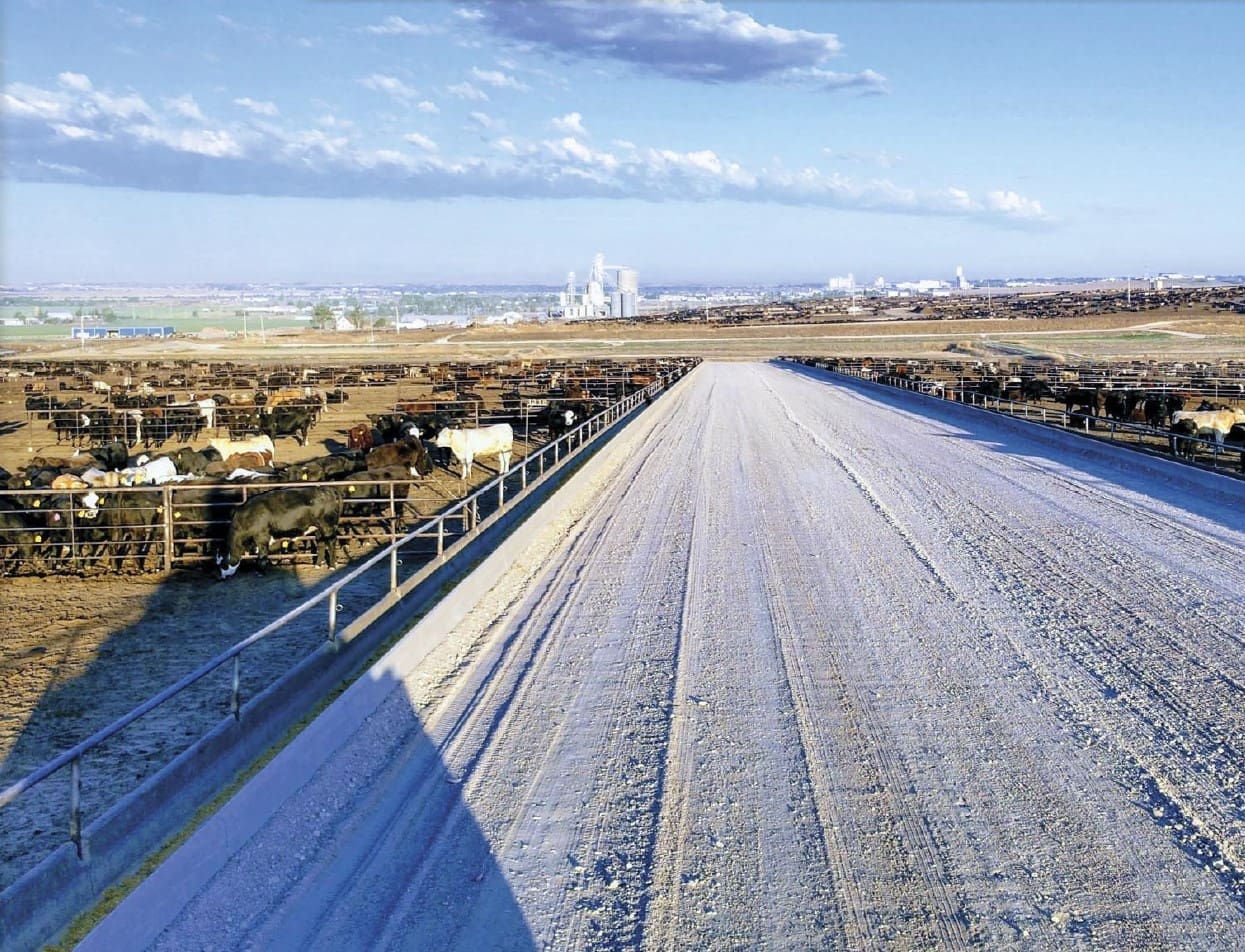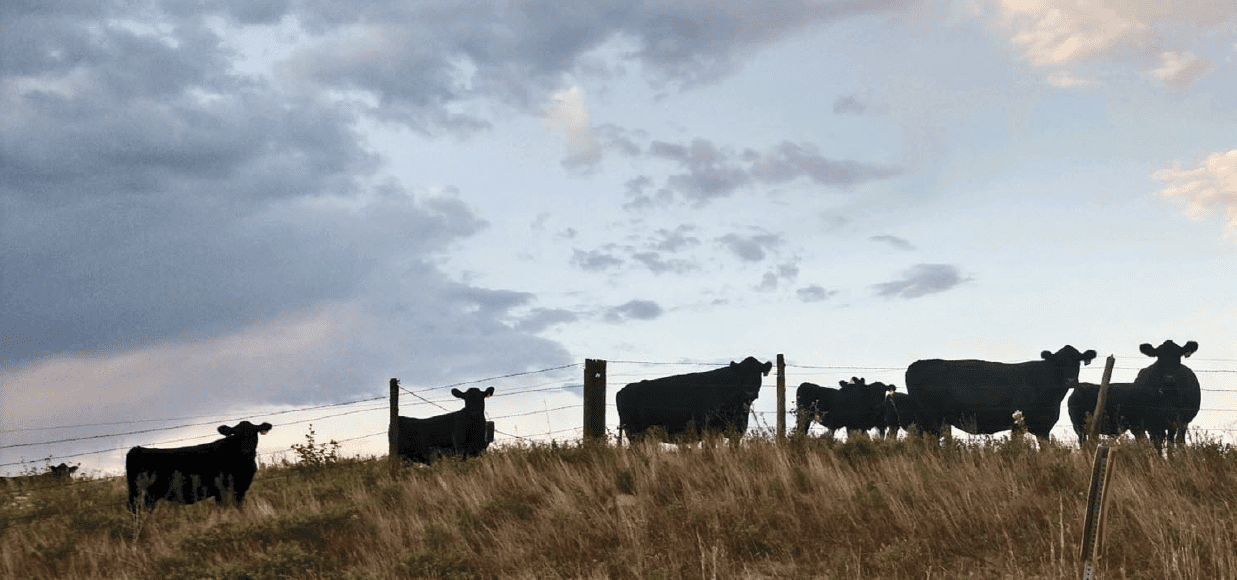

As we visit feedyards to work with animal health teams in the areas of processing, pen riding, and hospitals, we are always looking for areas of opportunity to improve effectiveness, efficacy, and efficiency.
When working with cattle in processing facilities or while accomplishing our daily pen riding routine, I like to implement a five-point animal health evaluation.
This evaluation not only consists of detecting cattle that may need medical attention but also helps promote animal health in the lameness, digestive, respiratory, neurological, and mental categories.
In this article, we will address the most commonly seen causes of lameness.
When we enter a pen of cattle, it is important to get all cattle up and ask them to move a reasonable distance or time that will allow us to make a careful lameness evaluation.
Considerations to include in a lameness evaluation in the pen include watching for proper coordination and equal strides on both sides, identifying locomotion score, identifying affected limb(s), determining if it is upper or lower limb lameness, and always taking note of clinical signs presented by the animal in its home pen.
This information will help the doctor with case definition, diagnosis, and treatment.

Some of the most common causes of lameness in feedyard settings include foot rot, digital dermatitis, toe and sole abscesses, and laminitis.
Foot rot is characterized as an acute infectious disease that affects the interdigital space of the hoof when injured.
Injury or dermal interruption of the interdigital space can be caused by physical activity on rough surfaces and prolonged muddy and wet conditions.
Once the interruption of the skin is present, Fusobacterium necrophorum is then the causative bacteria to produce the infection that can initially affect the connective tissue and can extend to the tendons and joints if detection and treatment are not conducted in a timely fashion.
Affected animals present pain, lameness, and swelling in the interdigital space up to the fetlock joint of the affected foot in most cases.
Digital dermatitis, commonly known as hairy heel warts, is a chronic infectious disease that affects the skin of the plantar interdigital ridge of the hoof.
Digital dermatitis is more prevalent in hardy surfaces with high moisture conditions that cause weakening of the skin of the plantar interdigital ridge of the foot.
Several species of the Treponema bacteria family are known to be associated with digital dermatitis.
Symptoms associated include swelling, lameness, pain, and ulceration of the digital skin of the infected limb.
In some cases, early stages of digital dermatitis do not present lameness.

Another common cause of lameness in feedlot cattle is toe and sole abscesses.
Toe and sole abscesses are most commonly seen in young incoming cattle.
As cattle transition from the ranch, a background operation, or a sale barn, the risk of toe and sole abscesses can increase.
The main cause of toe and sole abscesses is the physical movement of the cattle through uneven, hard, and rough surfaces that can produce trauma and abrasions to the hooves.
Trauma to the toes and soles result in bruising and become hematomas which develop into abscesses.
Abrasive surfaces can cause damage to the part of the hoof called the white line which is what connects the hoof wall and the sole.
When the white line is damaged, a disconnect between the hoof wall and the sole can occur through which debris can enter and cause infection and later result in an abscess.
Laminitis, also known as founder, is a condition commonly seen in feedlot cattle that causes lameness. Laminitis is a disorder that affects the hooves of cattle.
Research has linked laminitis to metabolic insults caused by highly concentrated feed.
Factors that contribute to the cause of laminitis can include inconsistency of feed delivery and drastic changes in feed ingredients or feed amounts.
Acidosis is the main cause of laminitis. These metabolic insults result in the separation between the hoof wall and the underlying tissue and bone of the toes.
Clinical signs presented by laminitic cattle include abnormal growth of the claws and pain in affected feet. Laminitis affects the hind limbs, the front limbs, or all four limbs at the same time.
Currently there are no injectable products that can help treat laminitis.
Mitigation strategies such as trimming of the toes of the affected feet can help reduce the animal’s pain when walking.
When evaluating cattle for lameness, it is important to implement a locomotion scoring system to measure severity at that particular moment or over a period of time.
It is also important to be aware of any previous events that involved increased physical activity such as transition from other operations, transportation, or processing.
All animals that present some form of lameness deserve to be pulled and evaluated chute side to identify the cause and determine the appropriate treatment or mitigation strategy to be implemented.
Keep in mind that the timing of our pulls will significantly impact our treatment success rates.
 Jose Valles graduated with his Master of Biomedical Sciences from Kansas State University in 2013. He was born in the state of Durango in Mexico. He spent his childhood in both Durango and in southwest Kansas. In Mexico, his family has been dedicated to a cow-calf operation and the farming of dry beans, corn, and oats. After high school, Jose decided to further his education at the university level and has since lived in the U.S. He attended Seward County Community College in Liberal, Kansas, and during that time worked at the Liberal Animal Hospital. Jose transferred to Kansas State University through the Developing Scholars Program and Bridges to the Future Program. While attending Kansas State University, Jose worked at the Beef Cattle Institute from 2007 to 2013. After graduating from Kansas State University in 2013, Jose joined the PAC team, then later that year married his girlfriend Areli, and moved to Kearney, Nebraska. Jose enjoys spending time with his beautiful wife Areli and his sons Matteo and Antonio who are 4 and 5 years old. He also enjoys riding a good horse, horse races, and grilling steaks.
Jose Valles graduated with his Master of Biomedical Sciences from Kansas State University in 2013. He was born in the state of Durango in Mexico. He spent his childhood in both Durango and in southwest Kansas. In Mexico, his family has been dedicated to a cow-calf operation and the farming of dry beans, corn, and oats. After high school, Jose decided to further his education at the university level and has since lived in the U.S. He attended Seward County Community College in Liberal, Kansas, and during that time worked at the Liberal Animal Hospital. Jose transferred to Kansas State University through the Developing Scholars Program and Bridges to the Future Program. While attending Kansas State University, Jose worked at the Beef Cattle Institute from 2007 to 2013. After graduating from Kansas State University in 2013, Jose joined the PAC team, then later that year married his girlfriend Areli, and moved to Kearney, Nebraska. Jose enjoys spending time with his beautiful wife Areli and his sons Matteo and Antonio who are 4 and 5 years old. He also enjoys riding a good horse, horse races, and grilling steaks.
Get all Doc Talk episodes straight to your email inbox!